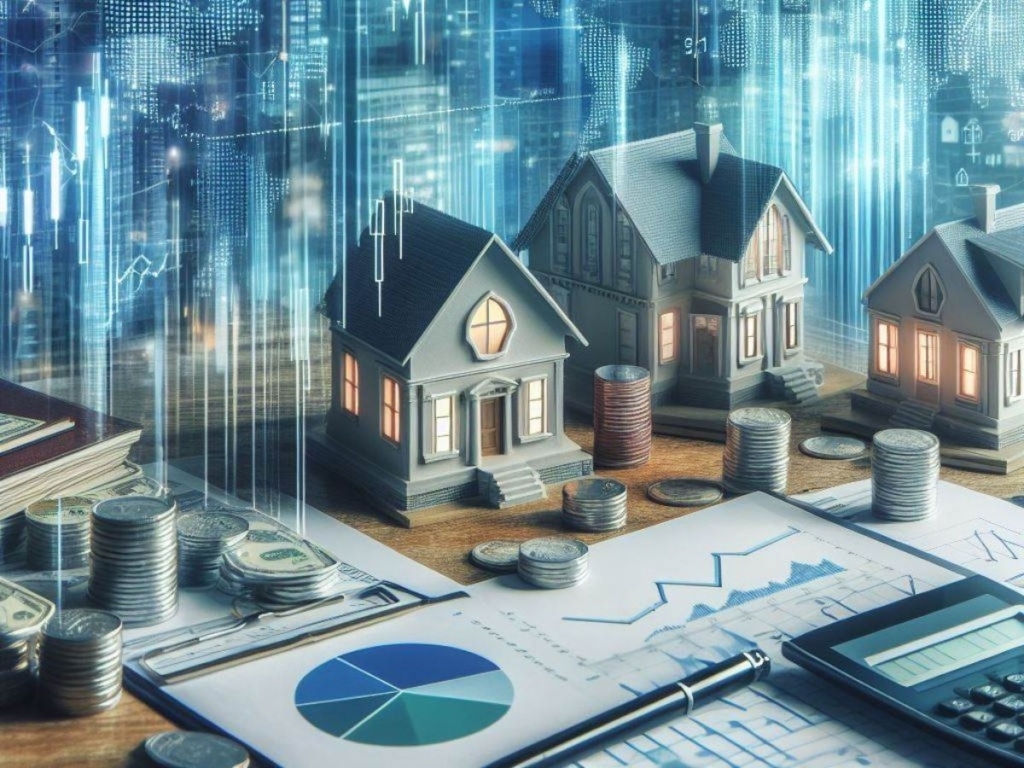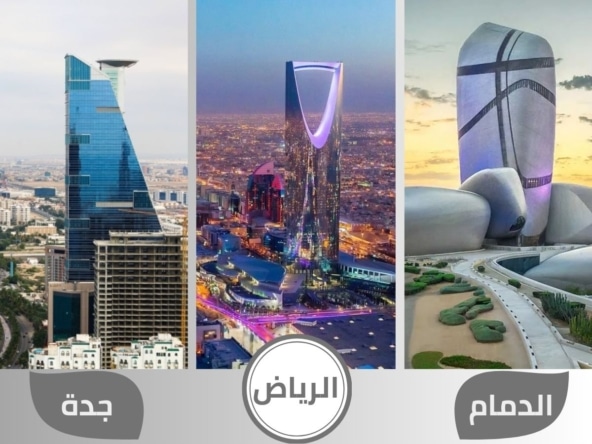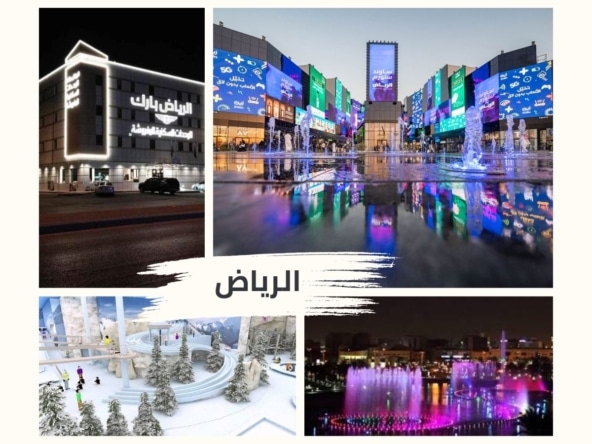The real estate market in Saudi Arabia constitutes one of the largest and most important markets in the Middle East, as it has witnessed remarkable developments over the past years. This market is affected by multiple factors, including economic, political and social changes in the Kingdom of Saudi Arabia.
In this article, we will discuss the current state of the real estate market in Saudi Arabia, including the types of properties available and the most in-demand areas for buyers in Riyadh. We will also review the factors influencing this market, and provide up-to-date insights to buyers and sellers in the changing real estate market. We also talk about residential and commercial real estate market trends in Saudi Arabia. Follow us for more information and analysis on this interesting topic.
Real estate market in Saudi Arabia
The real estate market in Saudi Arabia was severely affected by the outbreak of the COVID-19 pandemic. As it witnessed a widespread economic slowdown and contraction in business activity, significantly impacting all major sectors. However, thanks to the increasing economic reforms linked to the Kingdom’s Vision 2030 and improving global conditions, the real estate market has witnessed a positive shift in its performance. The government plays a vital role in guiding this market through its multiple policies and initiatives. Exempting real estate transactions from the 15% value-added tax and reducing property taxes boosted residential real estate market activity. In addition, other economic reforms have significantly affected the real estate market in the Kingdom. This paved the way for increased investment opportunities and enhanced economic growth.
Factors affecting the real estate market in Saudi Arabia
Kingdom Vision 2030:
The Kingdom’s vision aims to diversify the economy and strengthen non-oil sectors like real estate. Implementing this vision makes the Kingdom an attractive place for real estate investments. The impact of the Kingdom’s Vision 2030 on the real estate market in Saudi Arabia is clearly evident through:
Developing organizational systems:
The Kingdom’s Vision 2030 aims to stabilize the real estate market and prevent irresponsible speculation by developing effective regulatory systems.
Commitment to sustainability:
The implementation of the vision focuses on environmental and urban sustainability. This encourages real estate projects to adopt sustainable features and technologies for a balance between development and environmental preservation.
Simplifying the laws:
Implementing the vision streamlines real estate investment laws, attracting foreign investors and boosting foreign investments in the market.
Development of the real estate financing market:
The Kingdom’s Vision 2030 facilitates the development of the real estate financing market and provides better financing options for buyers. This enhances access to real estate and supports growth in the sector.
Tourism support:
The government’s introduction of international tourist e-visas is anticipated to have a positive impact on the Kingdom’s real estate market. This move is expected to boost demand for hotel and residential properties while enhancing global competitiveness.
The impact of increasing political and economic stability in Saudi Arabia on the real estate market
The impact of the economy and political stability on the real estate market in Saudi Arabia clearly shows how real estate orders and transactions are affected by changes in the economic and political situation. When the economy is growing and thriving, demand for real estate rises as a result of increased confidence and purchasing power of investors and buyers. On the other hand, in difficult economic times, demand for real estate can decline as purchasing power declines and mortgage interest rates rise.
Therefore, the political and economic stability of Saudi Arabia is crucial for attracting more real estate investments. Political and economic stability enhances confidence among investors and creates an attractive environment for investment, as investors search for a stable environment that guarantees good returns on their investments in the real estate market in Saudi Arabia.
Impact of infrastructure development
Developing real estate infrastructure in the Kingdom of Saudi Arabia represents an essential part of the Kingdom’s Vision 2030, which aims to achieve sustainable development and transform the economy from dependence on oil to a diversified and innovative economy. Advanced real estate infrastructure represents a vital element in attracting investments and promoting economic growth, and plays an important role in improving the quality of life and community well-being.
The development of real estate infrastructure in the Kingdom includes many aspects, including:
Residential projects:
The main challenge in this area is to provide affordable and high quality housing to citizens and residents. Residential projects include the development of integrated residential complexes and new residential communities that provide integrated facilities such as schools, hospitals and parks.
Commercial projects:
Commercial projects include developing commercial centers and modern commercial complexes that meet market needs and enhance trade and business in the Kingdom. Diverse investment opportunities are provided in the areas of retail, hospitality and entertainment.
Industrial projects:
The development of industrial projects aims to support the industrial sector and promote local manufacturing and export. These projects include the development of new industrial zones and industrial communities that provide a suitable environment for investment and manufacturing.
Realizing these projects requires significant investments in infrastructure, including road, water, sanitation, electricity, and communications networks. By developing this infrastructure, the Kingdom provides the opportunity for investors to participate in various projects and enhances the attractiveness of the real estate market, which contributes to achieving economic growth and improving the standard of living for citizens.

Legislation and regulations
Government legislation and regulations are crucial in steering developments in the Saudi real estate market, ensuring its stability and transparency. These legislations and regulations form the legal framework defining the rules and requirements for real estate transactions, ensuring fairness. One of the main impacts of this legislation and regulations is the protection of the rights of buyers and tenants. It guarantees a legal framework that safeguards their rights, boosting trust in the real estate market and enhancing its transparency. In addition, property taxes are used as a means to increase government revenues and to regulate the market, which affects real estate prices and real estate investments.
Legislation and regulations impose restrictions and conditions on foreign real estate investment to ensure compliance and safeguard local market interests. It also regulates rental prices and lease terms for tenants and landlords, which affects real estate returns and investments. Legislation and regulations aim to bolster penalties for real estate market violations, curbing fraud and manipulation while protecting investors. In addition to developing land planning laws to determine the conditions for land use and organization, which facilitates urban planning and achieves the maximum possible benefit.
If you want to read more about our services
In addition, legislation and regulations define the terms and conditions for real estate financing, and regulate borrowing and insurance processes, facilitating buying, selling and investing. It also aims to direct investments towards real estate projects that meet the needs of the residential market and promote economic growth.
Residential real estate market trends in Saudi Arabia can be identified as follows:
Rapid population growth:
With the high rates of population growth in the Kingdom, the demand for housing is constantly increasing, which leads to an increase in investments in the residential real estate sector.
Expansion of the middle class and increased income:
Rising middle-class expansion and income levels boost individuals’ purchasing power, particularly in middle-income brackets, thus driving demand for residential real estate.
Improving banking and real estate financing procedures:
Streamlining banking procedures and offering accessible financing options make buying and investing in residential properties more feasible for many.
Diversity of residential units:
The diversity of housing units provides buyers and renters with a plethora of options to fulfill their varied housing requirements.
Interest in luxury real estate and high-quality residential projects:
There is an increase in interest in luxury real estate and high-quality residential projects, as many individuals seek to obtain housing that meets the standards of comfort and luxury.
Differences in interests between cities:
The interests of buyers and renters differ between the major cities in the Kingdom. For example, in Riyadh, villas are the preferred choice for Saudis, while in Jeddah demand is directed towards mid-cost apartments, and in Dammam residential properties target the middle segment.
Commercial real estate market trends in Saudi Arabia
Commercial real estate market trends in Saudi Arabia reflect a dynamic and competitive movement, and indicate the following:
Increased demand for new properties:
The commercial real estate market is witnessing an increase in demand for new properties, due to the continued growth in commercial activities and the increase in competition between companies.
You can visit our website to learn more about our properties
Development of the tourism sector:
The development of the tourism sector contributes to increasing the number of visitors and citizens. This boosts commercial prospects in tourism-related industries like hotels, restaurants, and commercial centers, enticing investors to undertake new commercial ventures.
Stable and profitable investment:
Investing in the commercial sector is considered a stable and profitable investment in the Kingdom. Which encourages investors to direct capital towards new and suitable business projects, and increases economic activity in the country.
Diversity in real estate offers:
Commercial real estate offers in Saudi Arabia vary to suit different business needs, giving investors a wide range of options for investment and expansion in the market.
Encouraging foreign investment:
Encouraging foreign investment is key to attracting more international investors to Saudi Arabia’s commercial real estate sector. This contributes to increasing supply and demand and developing the market in a sustainable manner.
A future vision for the real estate market in Saudi Arabia
The size of the real estate market in Saudi Arabia is expected to exceed US$94.19 billion by 2028. This will contribute to increasing the country’s GDP by an estimated 8.8% by 2030. The number of workers in the real estate sector, including companies, is also expected to increase. And real estate offices, individuals and developers, with an annual growth rate of about 2.57% by 2030. This reflects the trend towards achieving the Kingdom’s future vision.
The commercial real estate market in the Kingdom is projected to reach around $31.35 billion by 2028. Also, the growth in investment opportunities and improved travel facilities at the new King Abdulaziz International Airport will boost the commercial real estate sector. Riyadh, as the main business hub in the Western Region, will particularly benefit from increased demand for commercial properties. The airport’s enhanced connectivity will attract both domestic and international investors to Riyadh’s commercial real estate market.
The demand for administrative offices in major cities is also expected to increase due to the start of the implementation of economic reforms within the framework of the National Transformation Plan and the Kingdom’s Vision 2030. With ongoing vision implementation, Saudi Arabia’s real estate market is poised for sustained growth and prosperity. Anticipated real estate growth in Saudi Arabia positions it as a prime investment hub for both short and long-term ventures.
Conclusion
In conclusion, Saudi Arabia’s commercial real estate sector demonstrates significant development, reflecting the nation’s economic growth and urban advancement. As Saudi Arabia advances towards Vision 2030 and bolstering non-oil sectors, analysts foresee sustainable growth in commercial real estate. Increased investments in various sectors such as tourism, trade, and entertainment are boosting demand for commercial real estate. While developing infrastructure and facilitating banking procedures, it attracts more investors, both local and international.
As an integral part of the Kingdom’s economic vision, the commercial real estate market is a vital platform for economic growth and investment in the Kingdom. With the continued comprehensive development and continuous improvement in the structure of the economy and local legislation, the commercial real estate market in Saudi Arabia appears ready to continue its path towards success and prosperity in the coming years.




